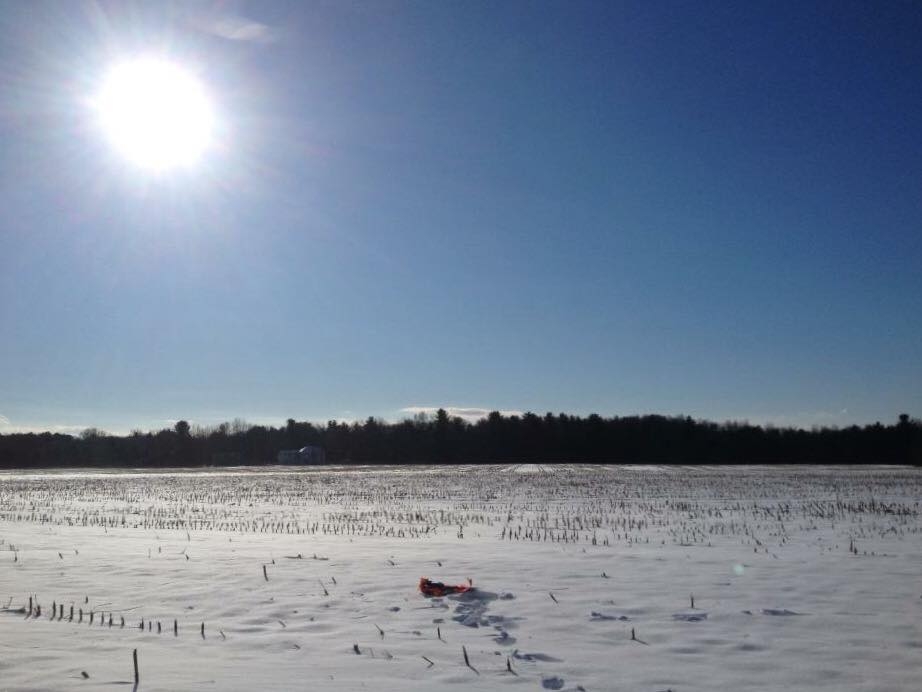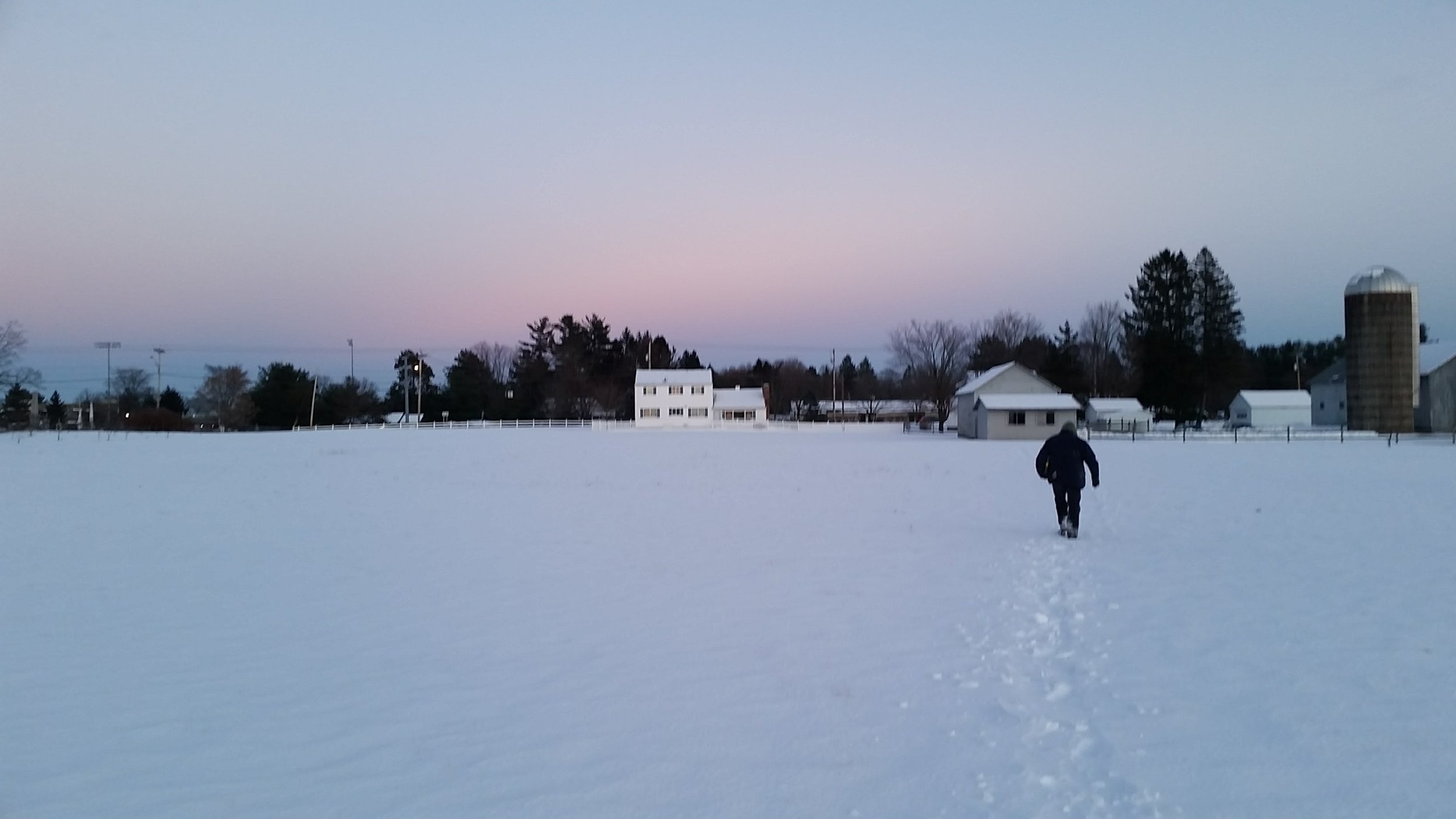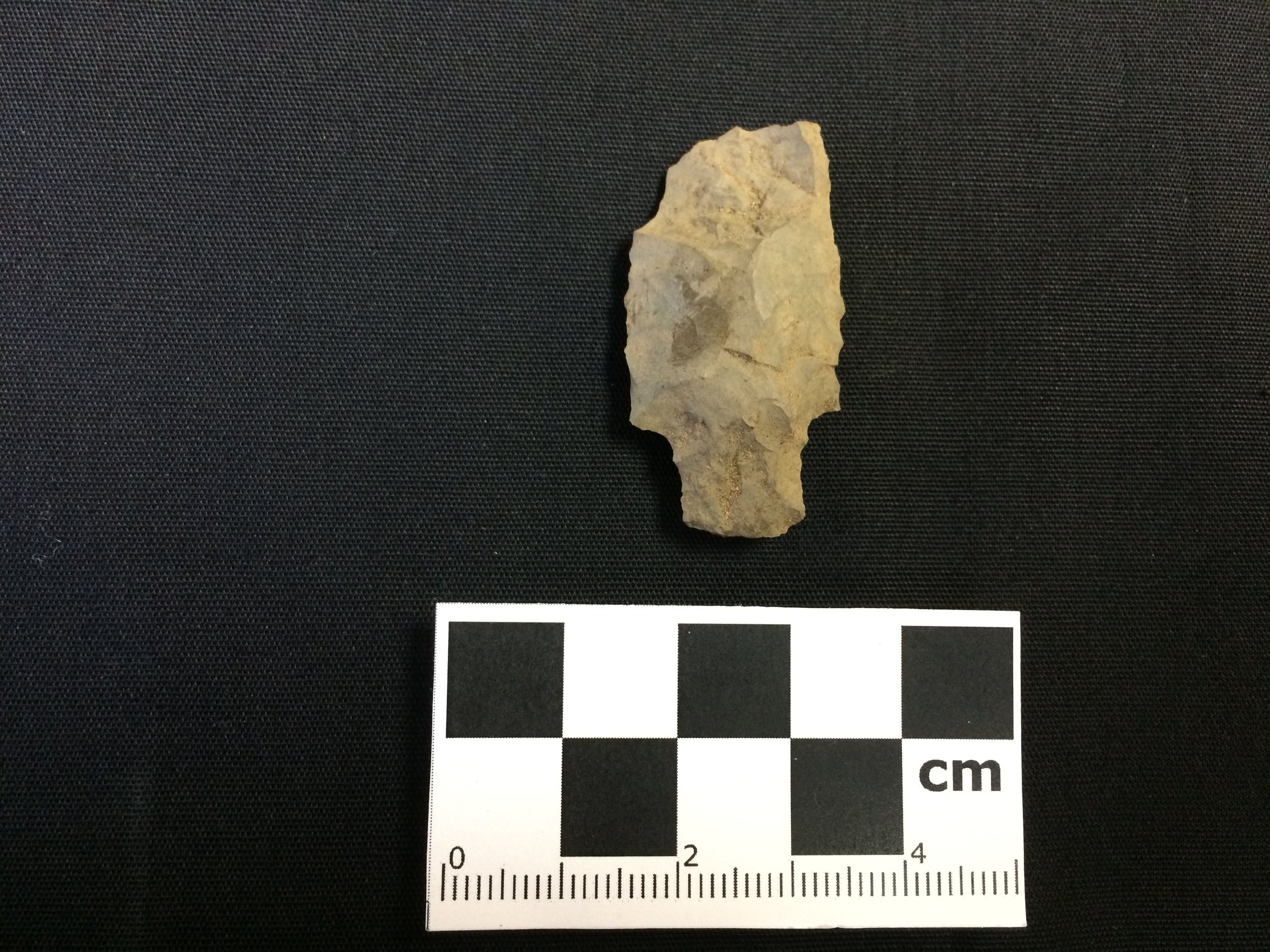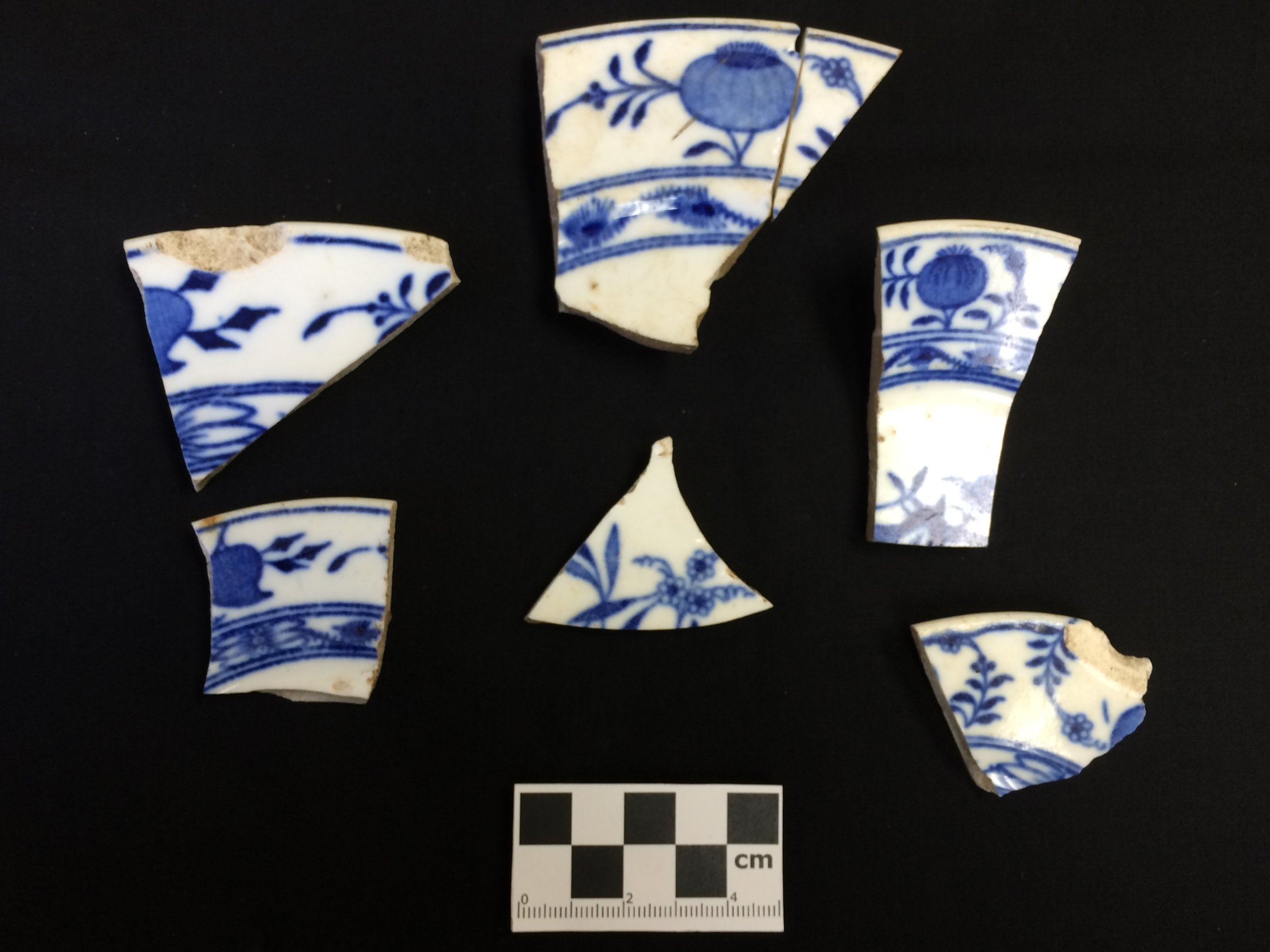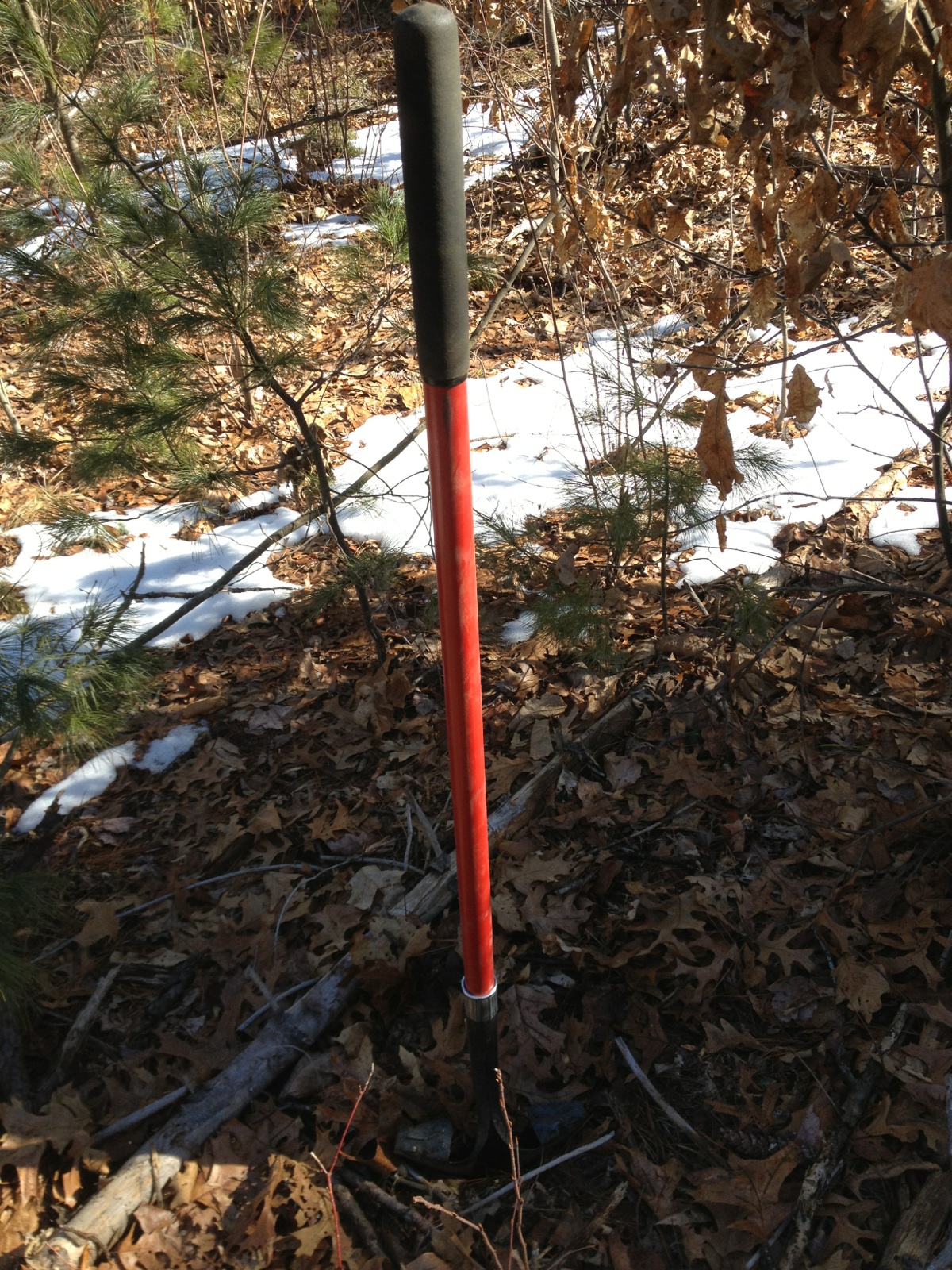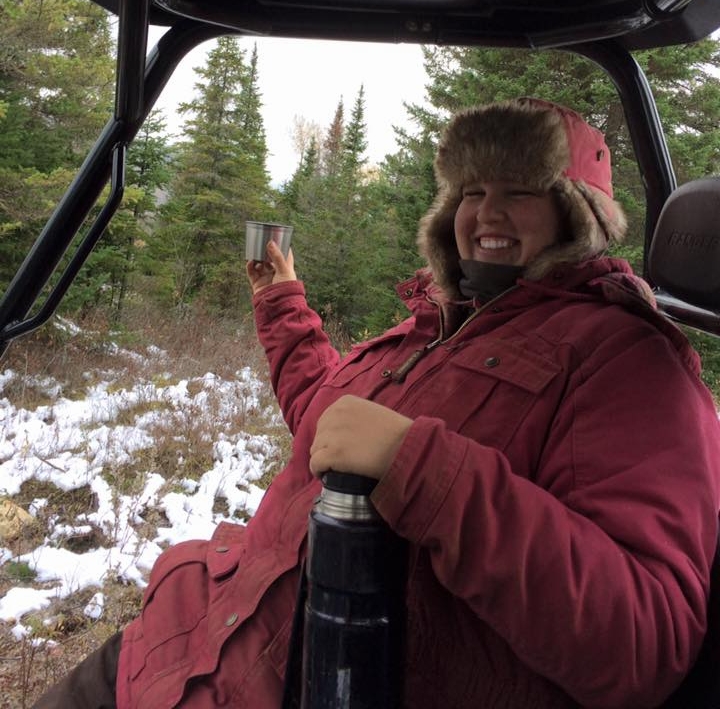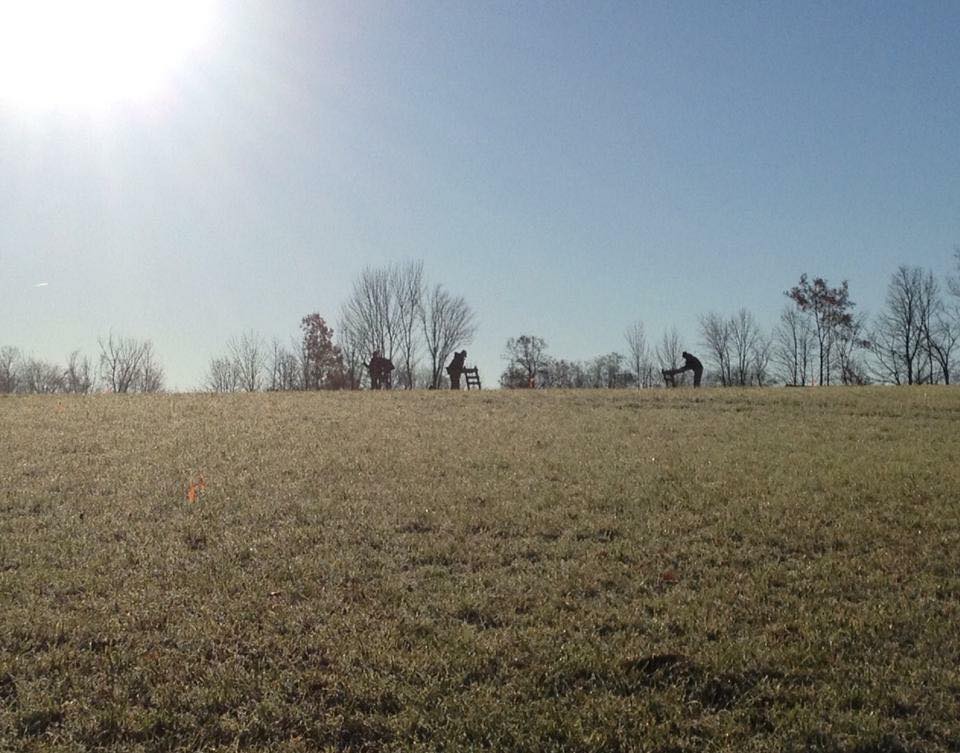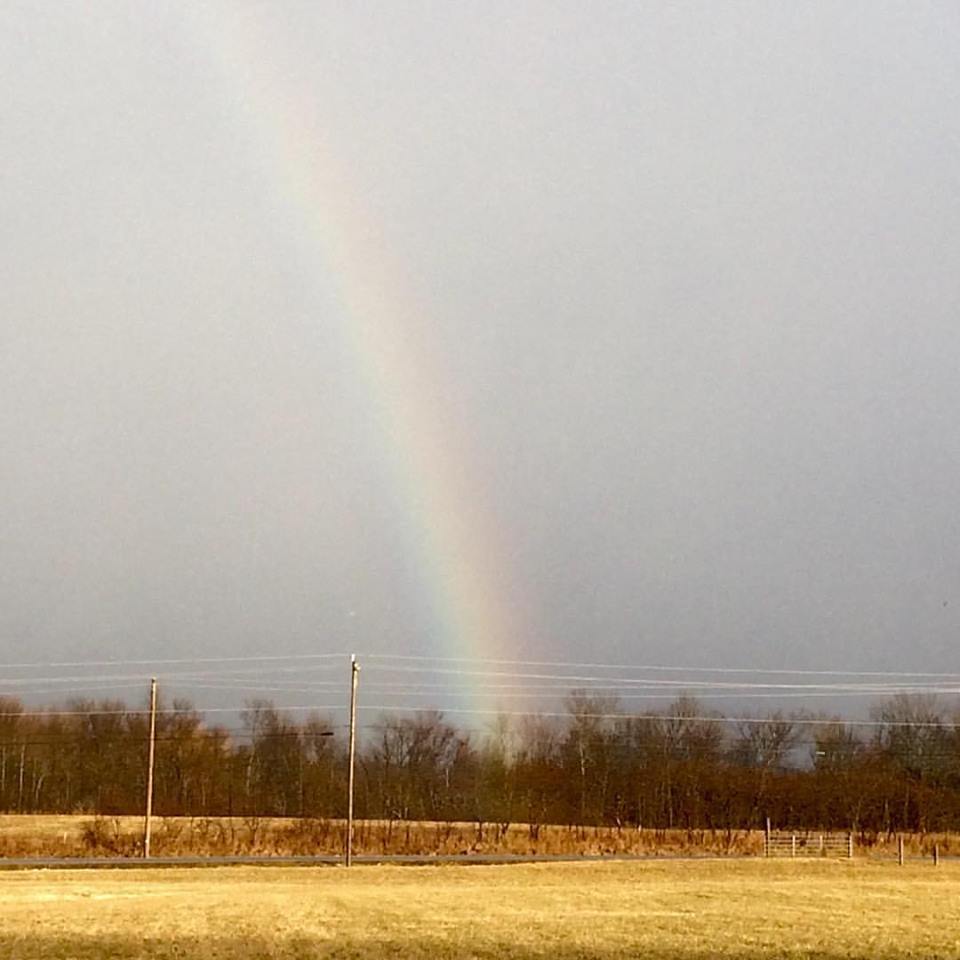There is a good reason New York State archaeology is conducted in the winter: Archaeological data are needed to satisfy environmental review and historic preservation requirements so that construction projects can proceed. Often, these projects need to avoid disturbing archaeological sites, or at least adequately take into account how they might affect archaeological sites. People who want to build in the spring or summer sometimes need archaeology done in the winter.
This process starts with a Phase 1 archaeological survey, an investigation of whether archaeological sites occur within a proposed construction area. The Phase 1 survey includes background research: checking files of archaeological site records, researching old maps, visiting the project site to evaluate its setting and condition. This work is sometimes called a Phase 1A archaeological or cultural resource survey, and this part can be done any time of year.
But the full Phase 1 survey has a Phase 1B part involving fieldwork such as test pitting. Most 1A surveys find that the Phase 1B is warranted, and indeed necessary to meet State Historic Preservation Office (SHPO) requirements. The Phase 1B fieldwork can be performed in the winter if the ground is not frozen.
You probably have realized by now we won't shy away just because it's cold: the big limitation is frozen ground. I find that in most years in the Hudson Valley region the ground freezes sometime in January, if it freezes at all. Wooded areas with thick leaf litter and areas covered with snow stay unfrozen the longest. There have been some years recently when the ground in the woods either did not freeze, or froze late and thawed early (staying frozen for maybe 3-4 weeks). Last winter we shovel-tested a wooded area in Ballston, New York during February, and at the end of February we shovel-tested a project site in Warrensburg. In winters when the ground freezes, it routinely thaws upward toward the last crust at the surface. During February and March, a thick, insulating cover of snow may enable the ground to thaw before winter is over, sometimes weeks before it's over, as we found in Cobleskill one winter.
So, often when someone needs to hire an archaeologist in the winter, despair about schedules may be premature. First of all, the background research can be performed. In addition, it may be possible to complete the field archaeology if the project area is wooded, if it has been snow-covered much of the winter, or if it is in a location such as an urban parking lot where a backhoe is needed anyway to test below paved surfaces and fill.
We do fieldwork every winter. The photos shown here represent winter fieldwork performed over the years (with cold hands and warm smiles) by some of the most skilled and dedicated field archaeologists. The captions give a little context on the work and results.








